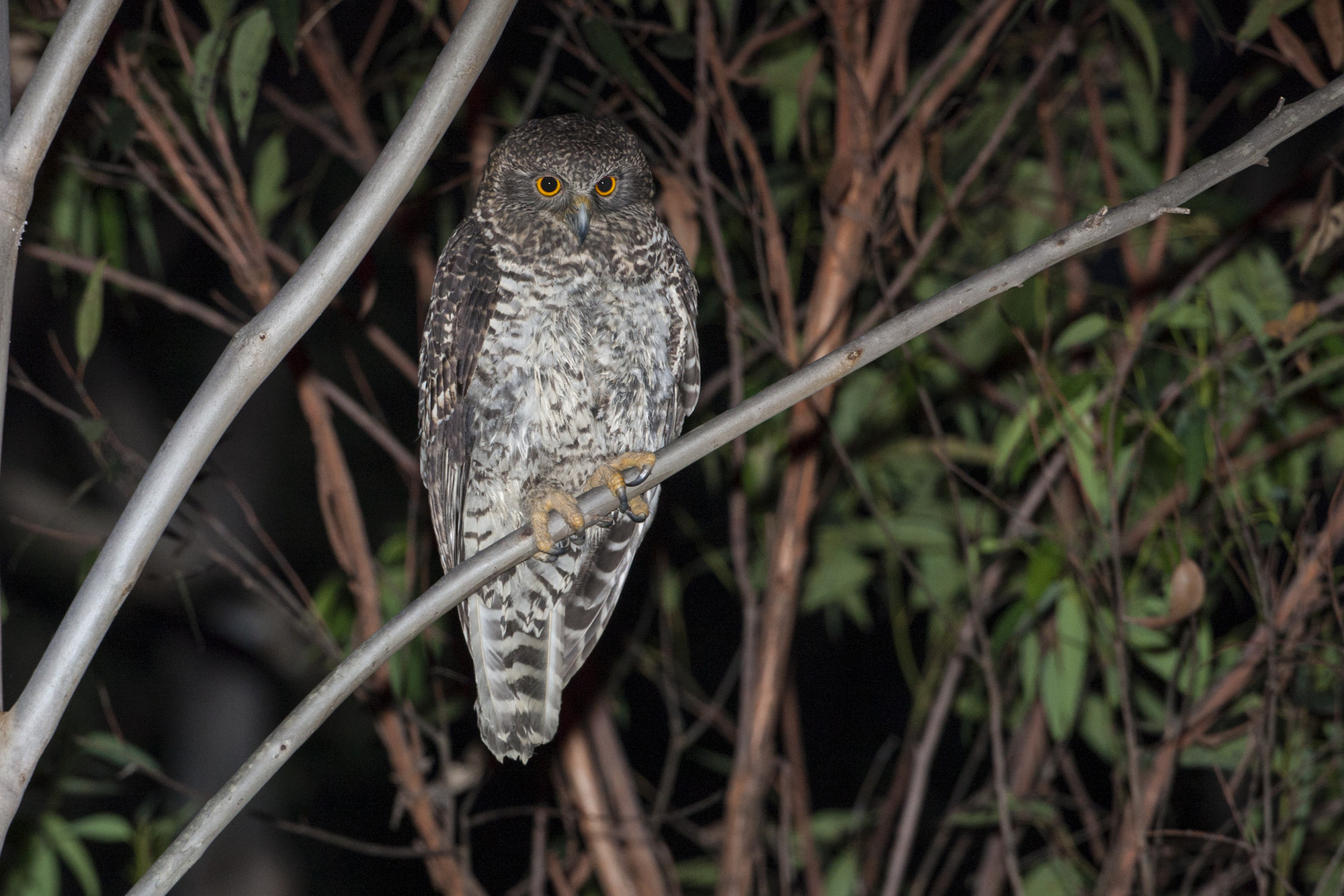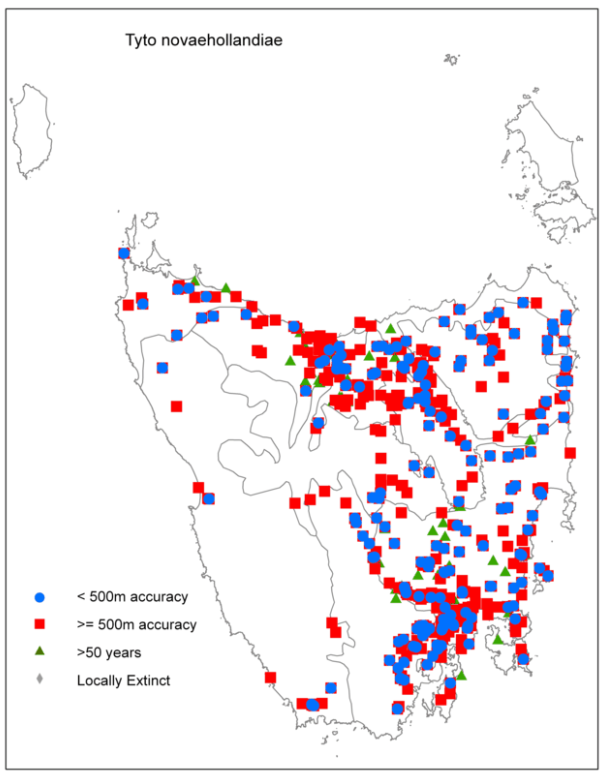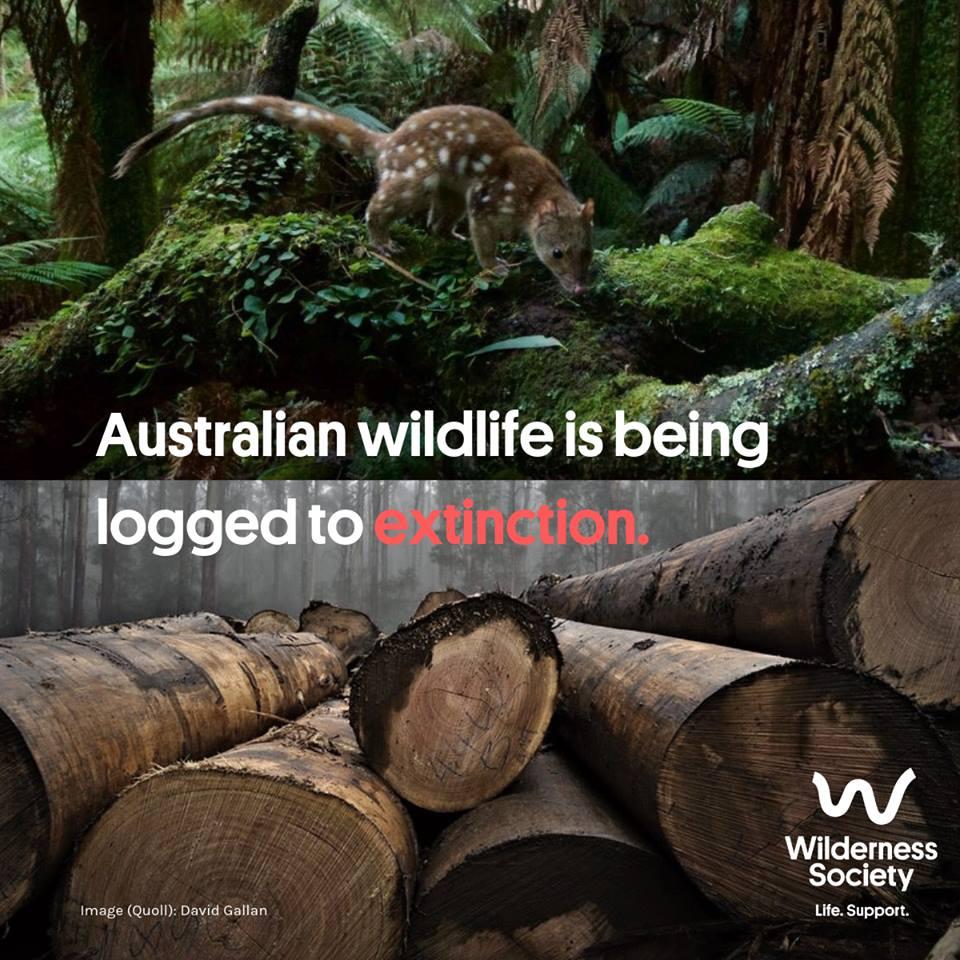News - 09 May 2019
Large Forest Owls (NSW/Tas/Vic)

Photo: Powerful owl | Ákos Lumnitzer
Powerful Owl (Ninox strenua), Sooty Owl (Tyto tenebricosa), Masked Owl (Tyto novaehollandiae)
Conservation status: Masked Owl (Tasmanian) VULNERABLE (EPBC Act); ENDANGERED (Tasmanian Threatened Species Protection Act 1995) Uplisted since RFA commencement? YES; Tasmanian Masked Owl, in 2009 EPBC Act recovery plan? NO; there is a ‘Conservation advice’; NSW has a ‘Large Forest Owls’ Recovery Plan |
Threats
“These three species present special problems for researchers and forest managers. They are difficult to study because they are nocturnal, wide ranging and naturally uncommon throughout their distributions. They are considered sensitive to logging and other forms of habitat disturbance since they are among the top order carnivores in the forest ecosystems of eastern Australia and many of their main prey species and nesting requirements depend on elements of old growth forest. Each of the Large Forest Owls are listed as threatened in NSW. Early assessments of their conservation status by Lunney et. al. (2000) suggested that the populations of each species and their current distributions have declined.”
Source: Recovery Plan for the Large Forest Owls
NSW: The remapping and rezoning of old growth forest and the ability to log giant trees through the new North East NSW IFOA will impact LFOs; The reduction of headwater stream buffers and the subsequent logging of large trees will impact LFOs as these riparian areas are often breeding areas (Pugh, D., 2018).
Victoria: The Sooty Owl (Tyto tenebricosa) is a medium large owl listed as Vulnerable in Victoria. The Central Highlands are a stronghold for the remaining population, which in 1989 was estimated at fewer than 500 breeding pairs, and in 2003 possibly as low as 400 breeding pairs. Sooty Owls are long-lived, mate for life, and are very territorial. 20-30 pairs of Sooty Owls require at least 25,000ha of suitable forest containing trees at least 150-200 years of age. Victoria’s Scientific Advisory Committee has declared that the species is, “very rare in terms of abundance or distribution.” Logging is listed as a threatening process for the Sooty Owl. To improve the conservation outcome for this species, scientists advise that threatening processes must be reduced and/or removed from the animal’s habitat to ensure Forest Owls’ persistence in the wild.
Tasmanian Masked Owl
“The main threats to the Tasmanian Masked Owl are clearing of nesting/roosting and foraging habitat (particularly tree hollows)… and competition with other species for the limited number of suitable nesting hollows... To avoid loss of nesting/roosting habitat—do not clear old growth forest containing potential nesting trees, and other non-old growth forests which contain old growth elements including hollow-bearing trees. To avoid loss of nesting/roosting trees—do not remove single or isolated older trees which contain hollows suitable for nesting.”

